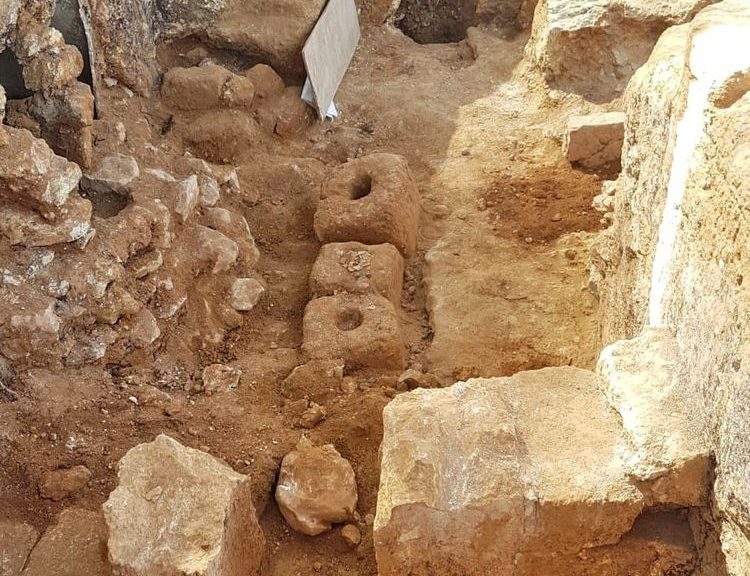An amazing discovery in Jerusalem! Jewish artifacts from an ancient Jewish town were found under an Arab neighborhood in Jerusalem. Now, how on earth did a Jewish town end up UNDERNEATH an Arab neighborhood?! Yes, that’s right… It’s because the ancient Jewish Israelites lived in Israel, with Jerusalem as their capital, many centuries BEFORE the Arabs ever stepped foot in the Land of Israel. It was not until the Arab conquest of Israel many centuries later that the Arabs built their neighborhoods on top of the destroyed Jewish towns. Despite all of the lies and deceit of the main stream media, the United Nations and much of the Arab world, Jerusalem has always been the eternal unified capital of Israel!
Illustrative photo credit: Ya`akov Billig, IAA
Extravagant Hasmonean Burial Estate Discovered in Jerusalem
Article Courtesy: Friends of the Israel Antiquities Authority
In Jerusalem’s Sharafat neighborhood the Israel Antiquities Authority is conducting a salvage excavation prior to the construction of an elementary school. They’ve uncovered a Jewish village from 2,000 years ago, dating to the Hasmonean period. Within this ancient domestic area the IAA has identified a water cistern, rock quarries and a large miqveh (ritual bath). The most significant discovery at the site is an elaborate burial estate chiseled into the bedrock.
The tomb’s courtyard was lined with a bench hewn from the bedrock, similar to tombs found in the Sanhedriah neighborhood. The bench was presumably used by those visiting the tomb to mourn the dead. Past the tomb’s façade, within the burial cave itself, a number of kochim (burial niches) were hewn into the bedrock of the walls. Out of respect for those buried within, and in accordance with the orthodox restrictions of disturbing burials, the IAA has sealed the tomb.
A number of large building stones and elaborate architectural elements common during the 2nd temple period were found in the earth above the tomb. Of particular interest is the Doric capital of a heart-shaped pillar. The architecture’s high-quality craftsmanship is very rare, according to the IAA’s press release, and is found mostly in monumental buildings or burial estates in the Jerusalem area, such as the burial estate of the priestly family of Benei Hazir in the Kidron valley.
The tomb is associated with a Hasmonean period village to the south, only a small portion of which was exposed in the current excavations. Nonetheless, Archaeologists have been able to determine that the village was likely an agricultural one. Amongst the discoveries was a large winepress and an olive oil press, indicating the residents cultivated and processed grapes and olives in the Jerusalem hill country.
Also of interest was the excavation of a columbarium, or dovecote, for the breeding of doves. Doves were an important commodity during the Second Temple period. They were valued for their eggs and meat, and even their droppings were useful for fertilizing agricultural fields. In addition, doves were an important part of sacrificial worship at Jerusalem’s temple. Doves were sacrificed for cleansing from a disease (Lev. 14:22-23) after childbirth (Lev. 12:7-8; Luke 22-24; ) and as a sin offering (Lev. 5:7). According to Mathew 21:12, doves were even being sold within the temple, presumably for the convenience of those coming to make sacrifices. The columbarium at Sharafat joins a number of others found in the Jerusalem area.
Read the Full Article

 Join Now
Join Now Sign Petition
Sign Petition Tell Friends
Tell Friends








